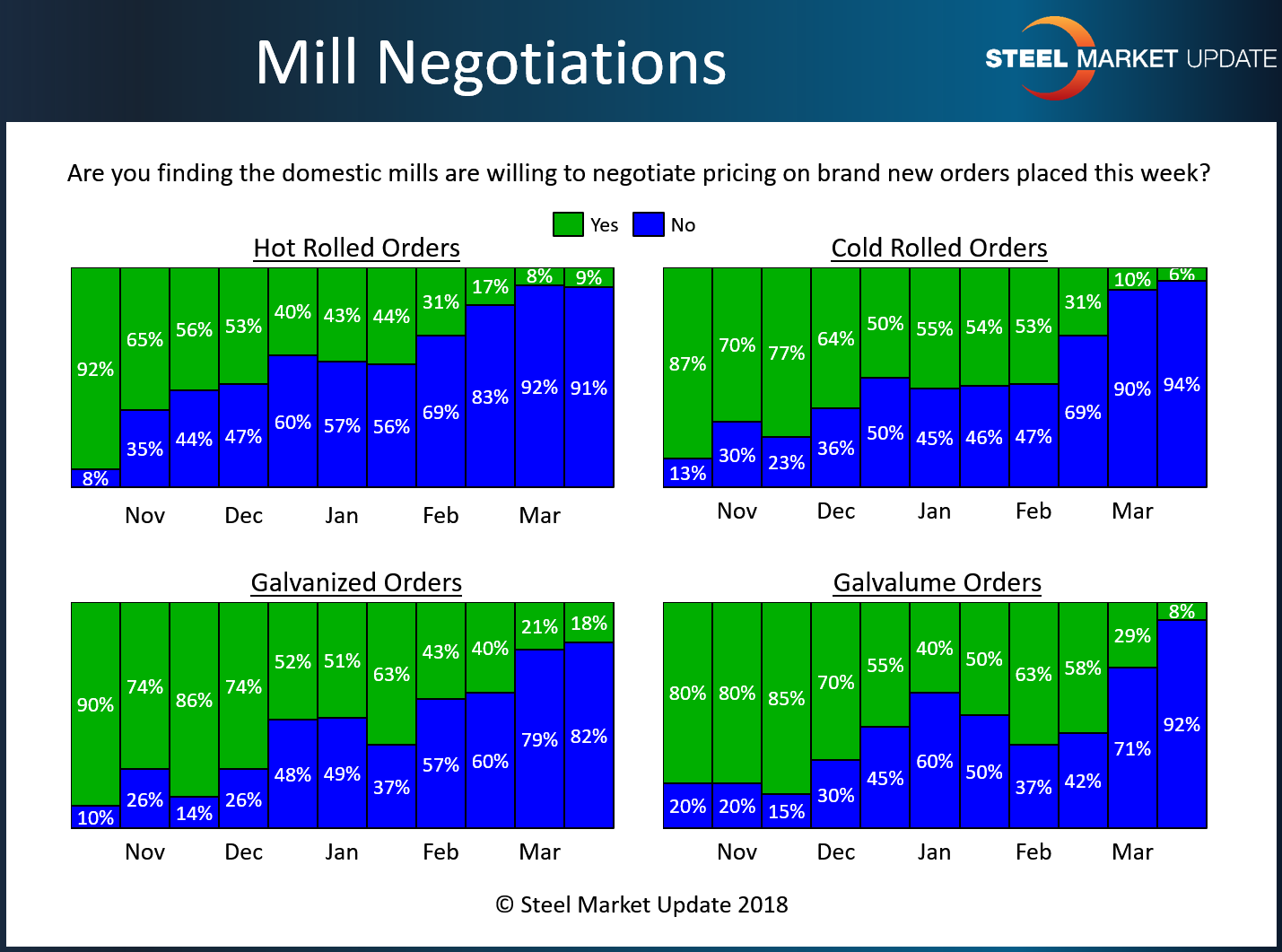SMU Data and Models

Steel Mill Negotiations: Mills Stand Firm
Written by Tim Triplett
March 22, 2018
With President Trump’s steel tariff set to kick in on Friday, domestic steelmakers remain in a strong pricing position. Buyers responding to this week’s SMU market trends questionnaire reported most mills unwilling to bend much when it comes to steel product prices, except in some cases for large orders.
By market segment, 91 percent of SMU respondents said the mills are holding firm on hot rolled steel prices, while only 9 percent have found mills willing to negotiate—about the same as two weeks ago.
In the cold rolled segment, only 6 percent said they have found some mills willing to talk price, while the vast majority (94 percent) reported mill prices on cold rolled as non-negotiable.
In the galvanized sector, about 82 percent of respondents said the mills are now standing firm on galvanized prices, while 18 percent said some mills are still open to negotiation on coated products. That’s more than a 20-point shift from just one month ago when 60 percent said mills were holding the line.
Negotiations also have tightened further for Galvalume. Two weeks ago, 71 percent of buyers reported that mills were not open to price discussions. Today, 92 percent said mills are unwilling to compromise on Galvalume prices.
Buyers tell SMU that only a few mills are flexible on price, and then only on large tonnages. Said one: “I have not tried to negotiate at these price levels. I avoid buying if possible as my cheaper tons from Q4 should keep me going for a few months.”
Note: SMU surveys active steel buyers twice each month to gauge the willingness of their steel suppliers to negotiate pricing. The results reflect current steel demand and changing spot pricing trends. SMU provides our members with a number of ways to interact with current and historical data. To see an interactive history of our Steel Mill Negotiations data, visit our website here.

Tim Triplett
Read more from Tim TriplettLatest in SMU Data and Models

SMU’s June at a glance
A look at SMU data for the month of June.

SMU Survey: Buyers’ Sentiment rebounds from multi-year low
Both of SMU’s Steel Buyers’ Sentiment Indices edged higher this week. Current Sentiment rebounded from a near five-year low, while Future Sentiment rose to a two-month high

SMU flat-rolled market survey results now available
SMU’s latest steel buyers market survey results are now available on our website to all premium members.

SMU Survey: Sheet lead times pull back after early-June blip, plate holds
Following the uptick seen two weeks ago, lead times eased this week for all four sheet products tracked by SMU, while plate lead times held steady, according to this week’s market survey.

SMU Survey: Pricing power abruptly shifts to steel buyers
The majority of steel buyers responding to our latest market survey say domestic mills are more willing to talk price on sheet and plate products than they were earlier this month. Sheet negotiation rates rebounded across the board compared to early June, while our plate negotiation rate hit a full 100%.

